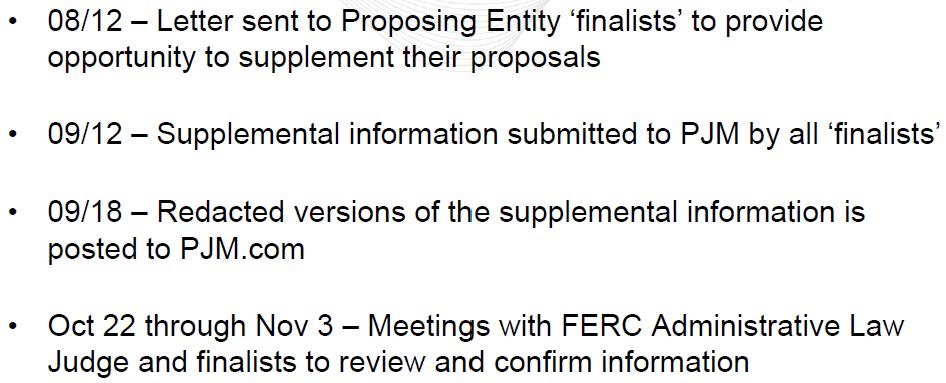Another coal & nuclear FAIL for tRump!
July 3rd, 2018

Catching up… Thanks to Bloomberg for finding this — a May 29, 2018 “confidential” memo, now attempting to use a “National Defense” framing to subsidize the failing coal and nuclear power industries:
This is on the heels of his prior attempts to push coal and nuclear generation. The claim is one of grid necessity, to keep it stable, don’t cha know. Right… If it weren’t of such immense scope and cost, I’d be Snorting Out Loud. Instead, it’s the other SOL!

From the horse’s mouth to the horse’s ass:
PJM Interconnection said in a statement that the power system is more reliable than ever.
If PJM says it’s not needed, if FERC says it’s not needed or wanted… DOH!
As was attempted in New Jersey, a bailout for PSEG nuclear plants in Salem, First Energy is at it too:
Coal power company files for bankruptcy and asks Trump for bailout
First Energy, whose systemic problems and negligence brought us the August 14, 2003 blackout, are now posing as champions of grid resilience?

No, just no. It’s obvious that tRump can’t change the market, the free market has spoken. What would the cost of this be to us? MASSIVE! So now they’re trying every excuse to prop them up at OUR expense, our expense as rate-payers, and our expense as tax payers. No, just no…
Third try… you are OUT!
Will Delaware, like Illinois, sue FERC and PJM?
July 30th, 2015
Sure hope so — they’ve got it coming. Cost apportionment is a big issue, and for PJM, well, they’d taken their cost apportionment dream to FERC, got the FERC rubber stamp, but it seems they’ve not done a good job of it, according to the Federal Court — that’s old news:
Fast forward to today — turns out Delaware’s Gov. Markell is objecting to costs assessed to Delaware ratepayers, (though I’m not seeing any objection to the project itself coming out of Delaware). DOH! He’d better, this project does nothing for Delaware.
Here’s the PJM Planning doc that tells all:
Note on the first page the statement of need, of why this project is wanted — this is really important:
PJM specified that solution proposals must improve stability margins, reduce Artificial Island MVAR output requirements and address high voltage reliability issues.
So let me get this straight — they’re having stability and reliability issues and PSEG wants to reduce Artificial Island MVAR output requirements, and want to charge Delaware ratepayers for this? PUH-LEEZE… This is a benefit to PSEG, not Delmarva…
And look what our big-coal friends at ODEC have to say:
ODEC letter regarding Artificial Island 7-29-2015
This project taps into the new line that was built not long ago:
Delaware has no regulation of transmission need or siting — so utilities can pretty much do whatever they want. Further, it’s a FERC tariff, so the state doesn’t have anything to say about it going into the rates, and cost apportionment. Great, just great. So now Markell is objecting? It’s a little late…
Delaware needs legislation — legislation like a “Power Plant Siting Act” and a legislative requirement of a need determination for whatever infrastructure they think they want. They need legislation specifying that only Delaware utilities can own and operate transmission in Delaware (see House Bill 387 from the 2014 session). Here’s what House Bill 387 would have done (It would have been an effective good start, protective of Delaware!), establish that a utility wanting to construct and operate transmission demonstrate NEED! Here’s the wording, though it would require quite a bit more, and some solid rules, to be effective:
a.the need for the proposed transmission line;
b.the impact on the reliability of the transmission grid
c.the long term viability of the public utility proposing the line;
d.the technical engineering and operating expertise of the public utility;
e.the technology and design proposed for the new transmission line; and
f.the economic and safety impact of the proposed transmission line.
Here’s the report about this PJM approval from Jeff Montgomery, News Journal:
Disputed cost-shares remain in plan for new power line
Note this snippet:
And here’s the schedule for this project going forward from the PJM Board meeting yesterday:
Seems there’s an opportunity before the FERC ALJ. But before then? What is Delaware going to do? Well, take a look at what Illinois did when it didn’t appreciate the FERC Cost Apportionment scheme — they sued FERC and won, based on the notion that if they weren’t benefitting, they shouldn’t be the ones paying:
The FERC Cost Apportionment scheme was remanded, and it’s in settlement negotiations right now. What is Delaware doing in that docket? To review the public postings, go HERE and search for FERC Docket EL05-121. The next settlement conference is Thursday, August 6, 2015, starting at 10:15 a.m. in a hearing room at FERC HQ. Delaware is represented in this, at least there are Delaware PSC staff listed on the service list, Janis Dillard, John Farber, and Robert Howatt. So what are they doing about this cost apportionment scheme? Seems this settlement conference is just the place for raising a stink about the PJM cost apportionment scheme, to raise issues of “benefits” and “cause cost, pay” arguments. Are they showing up and speaking up for Delaware?
Release PSEG from reactive power requirement? NOT!
August 23rd, 2014
PSEG wants out of its reactive power requirement for its Artificial Island Salem-Hope Creek generators, to get “maximum generation” and wants to build transmission to enable that plan. Reactive power stabilizes the system, and there’s no reason to exempt PSEG from that requirement. None! And that is certainly no reason to build transmission.
Our other home is in Delaware, Port Penn, to be precise, and I’ve just learned that even though the MAPP transmission project is dead, dead, dead, they’ve kept its heart alive, and are proposing to run a transmission line from Salem/Hope Creek across the Delaware Bay to Delaware City. An “Artifical Island – Red Lion” (AI-RL) transmission line. Great…
Here’s the map. Note that they don’t show the existing “Artificial Island-Red Lion” transmission line on this map — is this to use the same route, different, and why isn’t it shown on any of the maps?
Why is this needed?
It’s not a need, it’s a want.
WHAT??? Yes, that’s the PJMese for “ramp up the generation and not have any reactive power requirement” that stabilizes the electrical system, because, he, that takes away from the generation available to sell, can’t be doing that, can we, what’s more important, profit or stability?
Here’s the PJM “Problem Statement” from their site:
WOW… once more with feeling:
Generate maximum power without a minimum MVAr requirement
… and that’s their basis for more transmission? NO, I DON’T THINK SO!
PJM then runs
Ummmmm… oh… OK… well, then, PJM, it says to itself, it says, hey, let’s just produce some “stability test results” to make it look better, yeah, that’s the ticket:
Artificial Island Projects Stability Test Results Summary (Public Non CEII)
How stupid do they think we are? Well, if you don’t know the secrets of reactive power, here’s “everything you wanted to know about reactive power.” The basic premise:
Except in a very few special situations, electrical energy is generated, transmitted, distributed, and utilized as alternating current (AC). However, alternating current has several distinct disadvantages. One of these is the necessity of reactive power that needs to be supplied along with active power. Reactive power can be leading or lagging.While it is the active power that contributes to the energy consumed, or transmitted, reactive power does not contribute to the energy. Reactive power is an inherent part of the ‘‘total power.’’
Plus it turns out the AI-RL project proposals don’t meet PJM’s cost/benefit criteria:
The extent to which the relative benefits of the project meets a Benefit/Cost Ratio Threshold of at least 1.25:1 as calculated pursuant to Section 1.5.7(d) of this Schedule 6.
Even PJM had to admit that economic benefits were virtually nonexistent!
p. 3-4, 8.22.2014 July 2014 – PJM Board Approval of RTEP Whitepaper PDF
HAH! So despite this, PJM staff made a recommendation to the PJM Board, which said:
OK, transmission wonks, have you ever heard of a proposal that PJM didn’t like? Sounds like a significant “need” failure to me, that their desire just wasn’t enough. So back to the drawing board — but who gets a pencil?
Let’s see, PJM rejected it, and now they’re arguing about river crossings? How do you get from “lack of need” to “options for a costly crossing of the river?” From PJM’s report:
In April 2013, PJM Interconnection, LLC (PJM) requested technical solutions for improving PJM operational performance in the Artificial Island area under a range of anticipated system conditions and to eliminate potential planning criteria violations. In response to the Artificial Island-Red Lion Window, PJM received conceptual design level proposals from five (5) developers for the design and construction of a 500kV transmission line between Public Service Electric and Gas Company’s (PSE&G’s) Salem and Hope Creek Substations, which are located at Artificial Island in Salem County, New Jersey (NJ), and Delmarva Power & Light’s Red Lion Substation in New Castle County, Delaware (DE). The project is generally referred to as the Artificial Island-Red Lion 500kV Transmission Line.
PJM initiated, and note that:
The assessment of these proposals with regard to their ability to address electrical system needs or reliability is not included in the scope of this study.
Here’s the PJM PAGE WITH ALL THE PROPOSALS
And constructability analysis, here’s one (note they have it backwards, RL-AI):
GIA Red Lion-Artificial Island Constructability Analysis AI-RL Xmsn
And another constructability analysis:
And a third that bears closer examination, because if the point of this is generation without reactive power requirement, look at the option that addresses reactive power:
Burns & Roe – Constructability – Static Compensation VARs on AI-RL
Here are comments from interested parties:
New Jersey Sierra Club Letter – AI-RL Xmsn
New Jersey BPU and Rate Counsel Letter AI-RL Xmsn
Delaware “Public Advocate” Letter – AI-RL Xmsn
Northeast Transmission (LS Power) Letter AI-RL Xmsn
Atlantic Grid Letter AI-RL Xmsn
In the News Journal today:
Indecision remains on power line route
Contact Aaron Nathans at 324-2786 or anathans@delawareonline.com.
Susquehanna-Roseland update – lawsuit v. NPS !!!!
October 15th, 2012
The Delaware Water Gap is one of the few National Park Service Wild and Scenic Rivers, and it’s in a struggle to stay that way. I represented Stop the Lines before the New Jersey Board of Public Utilities administrative proceeding, which ended with a permit issued to PSEG. Boooo-hisssss.
TODAY, a lawsuit was filed by National Parks Conservation Assoc., Appalachian Mountain Club, Appalachian Trail Conservancy, Association of New Jersey Environmental Commissions, Delaware Riverkeeper Network, New Jersey Highlands Coalition, New York-New Jersey Trail Conference, Rock the Earth, Sierra Club, Stop the Lines versus Ken Salazar as Secretary of the Interior and head of National Park Service, and Dennis Reidenbach as Northeast Regional Director of National Park Service:
Complaint – National Parks Conservation Assoc., et al. v. Salazar & Reidenbach
GOOD! Serves them right, after caving to Obama’s transmission fast-tracking!
So what’s the scoop? PSEG and PPL have targeted the Delaware Water Gap for a crossing of its Susquehanna-Roseland transmission line. Here’s the NATIONAL PARK SERVICE PAGE for the project.
Here’s the full map:
Which is a small part of the bigger picture, part of line #1 on this Project Mountaineer, the transmission for coal scenario hatched at a top secret FERC meeting in 2005:
The alternatives evaluated by the National Park Service’s Delaware Water Gap in their EIS looks like this (click on map for larger version):
Here’s the link to the National Park Service’s Final EIS. Inexplicably, National Park Service went from identifying the “no action alternative” as the Environmentally Preferred Alternative, to a (rolling over) “STICK IT HERE!” Oh, and a payoff of $30-40 million. And then there’s “pre-approval” of the project by NPS…
Stay tuned!
NPS pressured about Susquehanna-Roseland EIS
July 21st, 2011
First, the bad news – the Commonwealth Court of Pennsylvania has affirmed the Order of the Pennsylvania Public Utilities Commission approving the Susquehanna-Roseland transmission project:
Commonwealth Court of Pennsylvania – Affirms Pennsylvania’s S-R Order
And now, on to the pressure… The National Park Service is working to do it’s job as steward of our national park land, in this case, the federally declared Wild and Scenic Delaware River and the Delaware Water Gap.
Seems that some don’t think they should be allowed to do that job, and are pressuring them to “hurry up” so the Susquehanna-Roseland transmission line can steamroll on through. Well, BACK OFF!
Today the pressure on NPS was overt in two venues. First, U.S. Rep. Charlie Dent (R-PA) amends a bill to push the NPS to complete its environmental review one year ahead of schedule. Say what?!?!?!
Then in my inbox a sour grapes press release from FERC Commissioner Phillip Moeller whining because the newly adopted rule won’t do what he wants, it won’t address “problems” like NPS doing its proper review of transmission projects:
Here’s the Susquehanna-Roseland specific part:
“While I offer substantial praise for today’s final rule, the Commission should have taken a different approach to several important issues. We must recognize that all of the nation’s difficulties in building needed transmission will not be resolved by this rule. Rather, this rule largely addresses planning for long-distance transmission lines, which is only a subset of the critical issues that are inhibiting needed investment.
This rule cannot address issues like the delays caused by other federal agencies in the siting of important projects, as this Commission lacks the legal authority to require other federal agencies to act. For example, see the comments of PJM in this proceeding at p. 17, which state that:
[t]he PJM Board approved the Susquehanna-Roseland 500 kV line in 2007. The Susquehanna-Roseland line was approved by the state regulatory commissions in Pennsylvania and New Jersey for 2012. The line is currently delayed by the National Parks Service [sic] and is not expected to be in service until 2014 at the earliest.
Ohhhhhhhh, isn’t it too bad. He’s just one Commissioner, and he’s got to put his dissent out there as an extensive and extended rulemaking proceeding closes… Why is he pushing, why does he care, and why does his care rise to the level that he sends out a dissenting press release? Lighten up, the National Park Service has a job to do. As the testimony in the Susquehanna-Roseland proceeding before the New Jersey Board of Public Utilities reflects, we are NOT going to freeze in the dark in an incubator without a job…
And here’s Pre. Charlie Dent’s whine:
Charlie Dent pushes expedited federal review of Susquehanna-Roseland power line proposal
Published: Thursday, July 21, 2011, 4:30 AM
By Tom Rowan Jr. | The Express-TimesAnd the New Jersey Sierra Club wants Dent, R-Lehigh Valley, to back off.
If it passes through the House, it would be referred to the Senate.











